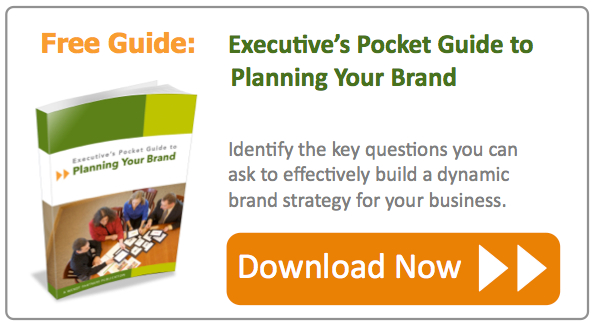Doug Wendt is a co-founder and senior partner with Wendt Partners.
 The following is an interview dialogue between Jessica Vaughan, a journalist with Washington, D.C’s Metro Weekly, and Wendt Partners founder and senior strategist Douglas Wendt. The topic is the importance of brand strategy to the future of businesses, associations and nonprofits as they seek to serve customers or members and grow their organizations.
The following is an interview dialogue between Jessica Vaughan, a journalist with Washington, D.C’s Metro Weekly, and Wendt Partners founder and senior strategist Douglas Wendt. The topic is the importance of brand strategy to the future of businesses, associations and nonprofits as they seek to serve customers or members and grow their organizations.
1. Why should people be so worried about branding?
People first need to understand what brand is about. There are two parts to your brand: the brand strategy and the brand identity. Since brand identity — the words and images you use to communicate your brand — is something we can directly experience, people tend to focus on the identity itself and forget about the strategy. You can’t have an effective brand identity without first developing the right brand strategy…the point being that what you should be worried about, first and foremost, is your brand strategy.
Your brand strategy defines who your organization is, and what it uniquely brings to the marketplace — whether that’s the business marketplace or the nonprofit marketplace.
For example: What sets you apart from your competition? How is your team better prepared to serve customers? What experiences will customers encounter when they interact with your business or organization? What promise do you make for every customer that your company will move mountains to follow through on?
Answering these questions then gives you the foundation for creating and communicating a brand identity that people can believe in.
2. What stories can you share of businesses who have been transformed through branding?
Probably the best-known story of the impact of brand strategy is that of Apple, Inc. This is a company that nearly died three times in its history, but every time it emerged stronger. Why? Because Steve Jobs and his team focused on the brand strategy at every turn. It’s not just that the technology is outstanding or the applications work beautifully. It’s that everything about Apple communicates the brand strategy of effortless interaction — from the design of the stores to the shapes of the products. People respond to that kind of single-minded determination, and Apple communicates it with near-perfection.
Another good example is that of FedEx. When Fred Smith founded Federal Express in 1971, there was no known market for overnight air express delivery. Sure, a handful of the nation’s largest companies could charter a plane if they needed to but no one thought that it could become a service used by millions of businesses and individuals.
At the time, business advisors told Smith to focus on building a general delivery company rather than a specialized overnight-only carrier. He ignored their advice and took a huge risk. You have to keep in mind that in 1971, no one provided guaranteed overnight delivery, period. By staying focused on a powerful brand strategy and building his company entirely around a specific brand promise — “When it absolutely, positively has to be there overnight” — he invented an entire industry.
In both cases, the brand strategy led to a powerful brand identity. But what both companies did most effectively was establish a clear brand promise, and then execute against it flawlessly.
3. What got you started focusing on brand strategy?
I came from the technology industry where change is constant and products or services have to evolve rapidly to meet customers’ needs. But what I learned was that the brand is not controlled by the company — it is controlled by the customers. Your brand lives in the minds of your customers (or members, or donors). It’s about what they think of you and what they believe you can deliver.
And what I saw after coming to this understanding, was that most organizations simply don’t have a clearly defined brand at all. Their customers or stakeholders most often just don’t know what to think. This led me to develop a business strategy model that focused on brand as the centerpiece.
Since customers control the brand, it’s also essential to understand the difference between reputation and brand. Both Hewlett-Packard (HP) and Apple have stellar reputations. If you asked most consumers their view on either company’s reputation, they would undoubtedly say that both HP and Apple represent true quality and maintain the highest standards of excellence.
However, 9 out of 10 consumers would probably not be able to say specifically why they should choose an HP product, where and how HP far outshines its competition, and in what ways HP is the best choice for their needs. However, 9 out of 10 consumers could answer those questions about Apple. A good reputation is essential to supporting a good brand, but the difference between the two is clear. A strong reputation means people respect you. A strong brand means people buy from you.
4. What's one good strategy for focusing on brand?
I’ll give you two, and together they represent the real starting points for brand success. The first strategy is to establish a vision. Now, the word vision has a sort of imprecise definition, so let me be specific. Paint a picture of what the world would look like if the products or services your business, nonprofit or association offers were fully utilized — that is, if 100% of your target customers used 100% of the capabilities you offer. How would the world be changed if the problem you exist to address was truly solved?
Then, the second strategy is to define your promise. In other words, take that vision you just created and write down what it would really take to get there, and the key benefits that your customers would experience by achieving that vision. Turn this into your brand promise, and then commit 100% of your organization’s energy to delivering on that promise.
This is much easier said than done, however. Everyone knows the local pizza shop owner who promises fresh ingredients in his advertising and then secretly buys prepackaged ingredients to save money, or his competitor who promises speedy delivery of a hot pizza but whose deliveries routinely run late and cold because he doesn’t want to hire enough drivers.
We’re very good at making promises, and generally not so good at keeping them. Brand success is all about the execution.
5. What should people do first to effectively address their brand?
The first thing most executives should do is stop — stop making decisions on sales, marketing, customer service or operations within their organization without a clearly defined strategy. There are lots of executives who think that amassing a laundry list of tactics collectively equals a strategy. It does not.
The close corollary to that is that most companies define their strategy by having a series of internal meetings to discuss what they themselves think about the company. This is almost as bad as having no strategy at all. An effective strategy is about doing external research in determining what the marketplace needs, and then assessing how your organization can uniquely meet one or more of those needs better than anyone else.
This is especially important for association executives to understand, as they no longer operate in a protected marketplace. Services, information and access that used to be only obtainable through a trade association is now often just as accessible outside of it. Therefore, most associations absolutely need to focus more narrowly on meeting specific needs in their market — rather than trying to be all things to all people.
6. Anything you'd like to add about the upcoming Brand-Driven Leadership workshop?
The workshop will explore the attributes of Brand-Driven Leadership, i.e. the strategies involved in collectively achieving brand success. Participants will learn about the internal and external components, and will hear numerous examples and success stories from the business, association and nonprofit worlds. They will also be able to perform a quick self-assessment of their own organization during the workshop, so that they can leave with actionable ideas that they can start working on right away.







